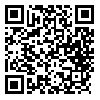BibTeX | RIS | EndNote | Medlars | ProCite | Reference Manager | RefWorks
Send citation to:
URL: http://jdc.tums.ac.ir/article-1-5254-en.html

 , Sahar Bijari2
, Sahar Bijari2 
 , Fatemeh Rostami2
, Fatemeh Rostami2 
 , Ziba Bagheri Sahamishoar2
, Ziba Bagheri Sahamishoar2 
 , Majid Barati *
, Majid Barati * 
 3, Maryam Farhadian4
3, Maryam Farhadian4 

2- Students Research Center, Hamadan University of Medical Sciences, Hamadan, Iran
3- Department of Public Health, School of Health, Hamadan University of Medical Sciences, Hamadan, Iran; Research Center for Behavioral Disorders and Substance Abuse and Department of Public Health, Hamadan University of Medical Sciences, Hamadan, Iran ,
4- Modeling of Non-communicable Disease Research Center and Department of Biostatistics, Hamadan University of Medical Sciences, Hamadan, Iran
Background and Aim: Body image is one of the main factors of self efficacy. This study aimed to investigate the relationship between body image and self-efficacy among female students in Hamadan University of Medical Sciences.
Methods: This cross-sectional study was carried out on 408 female students of Hamadan University of Medical Sciences in 2017 with a stratified sampling method. To gather data, we used Multidimensional Body Self-Relation Questionnaire (MBSRQ) and general self-efficacy questionnaire and recorded demographic variables. Data were analyzed with SPSS-21 software using Pearson correlation and linear regression tests.
Results: The dimensions of body areas satisfaction and illness orientation were evaluated at relatively desirable and moderate levels, respectively. Students' self-efficacy was also estimated at 60.05% of the mean score of the maximum achievable score at the moderate level. The results of regression analysis showed that the dimensions of the illness orientation, overweight preoccupation, fitness orientation, self-classified weight and appearance evaluation predicted the self-efficacy among the female students. In total, different dimensions of body image explained 14.1% of the variance of self-efficacy.
Conclusion: We suggest providing training packages about body image dimensions improvement to enhance the self-efficacy of university female students.
Received: 2017/10/25 | Accepted: 2017/10/25 | Published: 2017/10/25
| Rights and permissions | |
 |
This work is licensed under a Creative Commons Attribution-NonCommercial 4.0 International License. |



